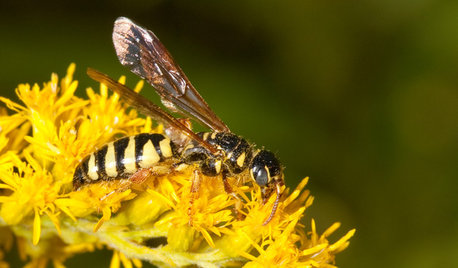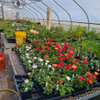Native lawn update
bpgreen
15 years ago
Related Stories

GARDENING GUIDESHow to Find the Right Native Plants for Your Yard
Find plant maps, sale sites and guides that make going native in the garden easier than ever
Full Story
GARDENING GUIDES15 Native Flowers That Feed Native Bees
These perennials offer superfood to hundreds of bees and are gorgeous in their own right
Full Story
GARDENING GUIDESAttract Thynnid Wasps With Summer-Flowering Native Plants
These beneficial insects will hunt damaging beetle grubs in your lawn
Full Story
FRONT YARD IDEASBefore and After: Front Lawn to Prairie Garden
How they did it: Homeowners create a plan, stick to it and keep the neighbors (and wildlife) in mind
Full Story
GREAT HOME PROJECTSHow to Replace Your Lawn With a Garden
New project for a new year: Lose the turfgrass for energy savings, wildlife friendliness and lower maintenance
Full Story
SAVING WATERHouzz Call: Are You Letting Go of Your Lawn?
Many facing a drought are swapping turf for less thirsty plantings. If you’re one of them, we’d like to hear about it
Full Story
LANDSCAPE DESIGNCalifornia Says Goodbye to the Sprawling Ornamental Lawn
New state rules will effectively limit turfgrass to 25 percent of the landscape in most new and renovated yards
Full Story
LAWN ALTERNATIVESStop Fighting the Patchy Lawn!
Here are 3 situations where a garden may be a better idea than more turfgrass
Full Story
LANDSCAPE DESIGN15 Great Ideas for a Lawn-Free Yard
End the turf war for good with hardscaping, native grasses and ground covers that save water and are easier to maintain
Full Story
INSPIRING GARDENSNative Plants Bring 10 Southern California Front-Yard Gardens to Life
Rare plants, rain gardens and wildlife habitats are just a few of the features showcased on the 2016 Theodore Payne Native Plant Garden Tour
Full Story







digit
bpgreenOriginal Author
Related Professionals
Allentown Landscape Architects & Landscape Designers · Edmond Landscape Architects & Landscape Designers · Elgin Landscape Contractors · Wake Forest Landscape Contractors · Arlington Landscape Contractors · Darien Landscape Contractors · New Providence Landscape Contractors · Oakland Landscape Contractors · River Ridge Landscape Contractors · Sun City Center Landscape Contractors · Twin Falls Landscape Contractors · West Orange Landscape Contractors · Los Angeles Solar Energy Systems · Palo Alto Solar Energy Systems · Payson Solar Energy Systemsjnfr
bpgreenOriginal Author
bpgreenOriginal Author
david52 Zone 6
bpgreenOriginal Author
digit
david52 Zone 6
jnfr
bpgreenOriginal Author
jnfr
jaliranchr
bpgreenOriginal Author
david52 Zone 6
bpgreenOriginal Author
david52 Zone 6
bpgreenOriginal Author